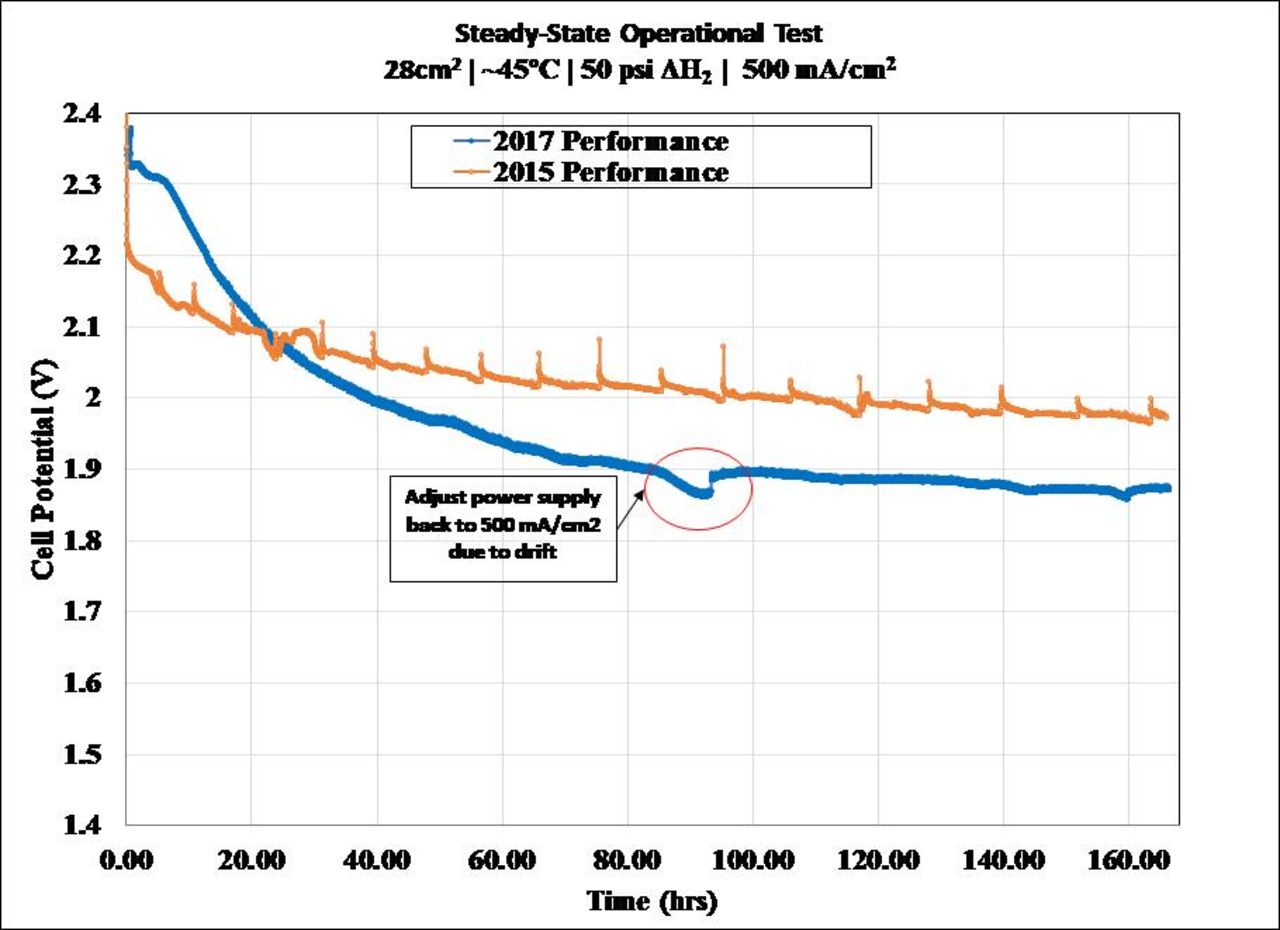Abstract
Membrane (PEM)-based electrolysis provides an ideal near-term technology to address the growing energy storage demands as intermittent renewable energy becomes more prevalent. While proton exchange membrane (PEM) systems are often viewed as preferred solutions to legacy KOH systems due to the lack of corrosive electrolyte, small footprint, dynamic operating range and ability to generate hydrogen at differential pressure, they still present capital cost challenges. In particular, the platinum group metal catalysts and valve metals for separator and flow field construction required for stability in the acidic environment become a significant cost driver at scale.
Alkaline exchange membrane (AEM)-based electrolysis is therefore viewed as a potential replacement to the current PEM systems as a means of driving down the high capital cost. This cost reduction is accomplished by replacing the typical high cost catalyst and materials of cell construction with lower cost metals that would corrode in the acidic PEM environments, but are stable in the alkaline chemistries. In theory, this approach is highly promising, but testing of the current state-of the art has shown the technology gaps between the two platforms in terms of stability, durability, and operating electrical efficiency. Modeling has shown that savings realized in capital cost are typically off-set by an increase in operating expense resulting from the lower activity of the non-PGM catalysts and poor conductivity of the AEM. Additionally, thermal instability of the AEMs require stacks to be operated at lower temperatures than a typical PEM system, impacting conductivity further and slowing kinetics.
Recent activities have looked at improving the mechanical properties, through the addition of mechanical reinforcements, to support pressurized operation, while operating temperature and varied concentrations of liquid electrolyte to the water feed have been explored to operationally evaluate the impact on performance and durability. The latter of these operating parameters have been shown by some groups to be effective in reducing cell operating potentials and providing overall voltage stability. However, this solution adds management and additional maintenance of handling the caustics typically used. Efforts at Proton continue to show improvements in short duration operational tests under milder conditions and potential pathways to achieve targets required to compete with incumbent technology. In this talk, some of the advancements achieved and how these have impacted the cost of the hydrogen will be discussed, as well as the longer-term targets that need to be reached in order to be a viable commercial application. Additionally, cost models will be compared along with sensitivity analysis to show how the impact of operating parameters, with regard to the capital and operational expense for the AEM electrolysis technology cost, show the critical areas to focus on to establish equivalence with current PEM systems and what is required to go beyond.

Figure 1
